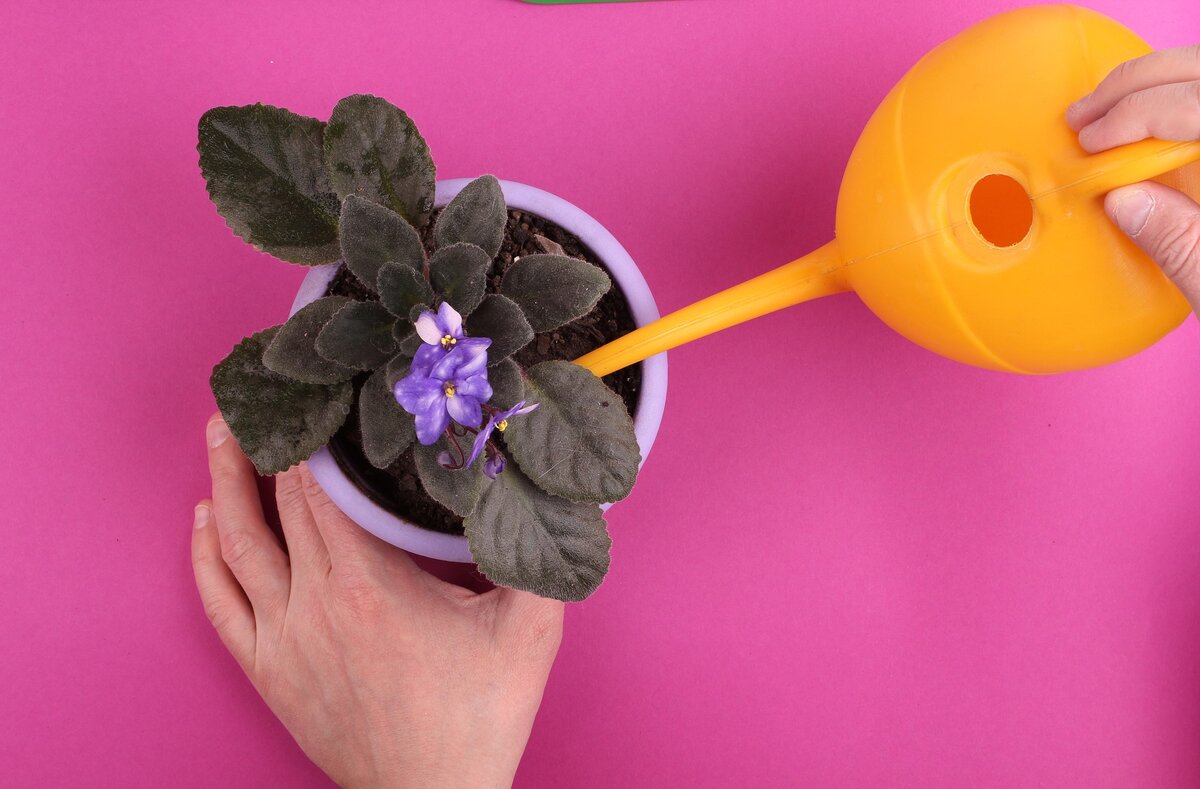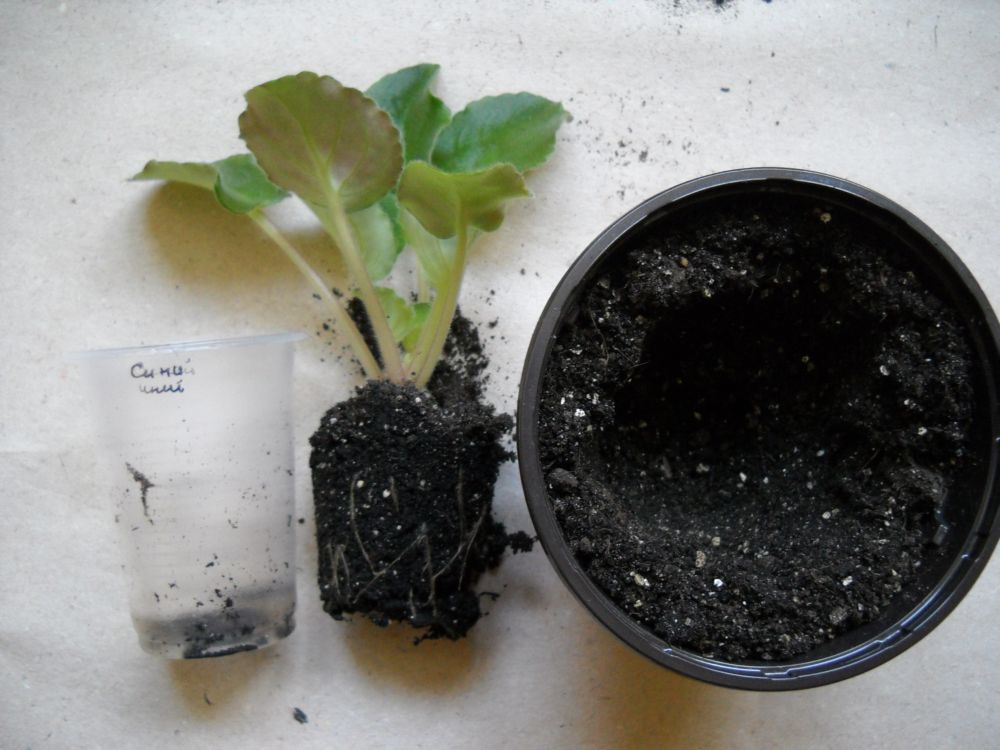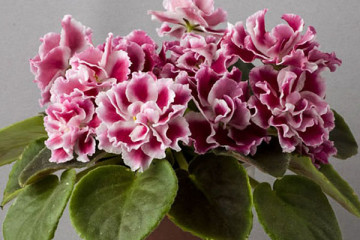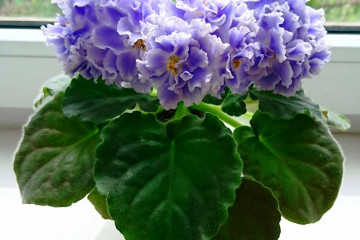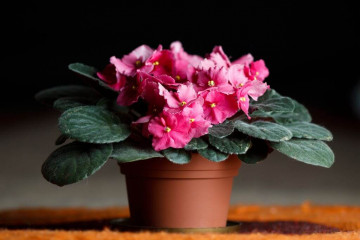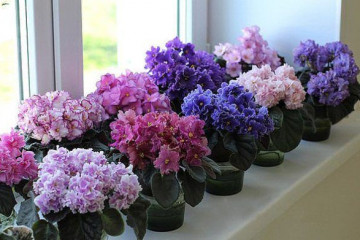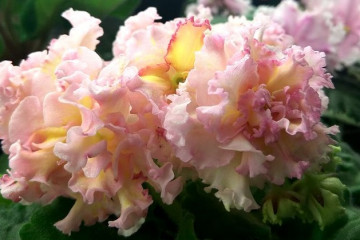Violet Raisin - description and characteristics of the variety
Content:
Violets are perhaps the most popular flowers in the world. They can please with many different species, which differ in shades, shape of leaves and flowers. One of the most interesting varieties is the Raisin variety - a flower with unusual blue buds with white specks.
What does a violet Raisin look like
The Raisin variety belongs to the Violet genus and the Violet family. There are more than 600 species of this plant in the world, but even against their background, Raisins can surprise.
Violet Raisin or DS-Raisin has a very memorable appearance due to its unusual inflorescences.
The compact bush has a height of 30-40 centimeters. The leaf plates grow directly from the root rosette and are tear-shaped. Their surface is smooth, and the color is solid dark green with no blotches or light areas or veins.
Violet DS Raisin was bred by crossing varieties found in the late 19th century by a British baron who traveled through eastern Africa. Breeders made many different hybrids of these flowers in the middle of the 20th century, the most beautiful of which was the violet DS Raisin.
What is sport for fantasy Saintpaulias
You can often hear the term "violet sport", what does it mean? There is nothing complicated in this word, this is the designation of varieties that, over a long time of their cultivation, have managed to lose the properties and characteristics of their ancestor variety. As a rule, such flowers can already be called a new subspecies of violets.
- Leaf sport
Leaf plates can undergo noticeable changes in shape and color. This is influenced by the conditions of the bush, the method of its propagation, the quality of fertilizing and the pH level of the soil.
- Flower sport
Violet sport undergoes noticeable changes in the characteristics of its colors. Due to genetic mutations and the effects of certain external factors, the color and shape of the inflorescences can completely change. The ancestors of Izyum had a solid lilac color, and the current plant has left this external resemblance to a small extent.
Features of caring for violets DS Raisins at home
Violets cannot be called unpretentious flowers, since there are several nuances in their care that need to be paid special attention to.
- Temperature
The most comfortable temperature for a thermophilic violet is +23 degrees. A decrease or strong changes in its maintenance regime will lead to negative consequences for the plant.
- Lighting
The bush should be grown in an open place, but direct sunlight often burns the leaf plates of the flower, so the pot should be placed not on the southern sides of the house, but on the west or east.
- Watering
The soil in the pot should be constantly moist, but loose. The plant is advised to be watered 2-3 times a week, and mulching can be carried out to retain moisture.
- Spraying
Spraying is very necessary for Zest, especially during dry periods. In addition, this procedure removes dust and dirt from the leaf plates of the bush.
- Humidity
Air humidity is of great importance for the normal growth of the bush. The most optimal indicator is 50%.
To increase the humidity, water is sprayed next to the violet bush, the leaf plates are gently wiped with a damp cloth.
- Priming
The soil in the pot should be loose and light. So that the flower does not lag behind in development, fertilizers must be regularly applied to the ground.
- Top dressing
For feeding, it is better to choose ready-made complex mineral preparations. In their composition, the increased content should contain phosphorus and potassium.
Top dressing of violets should be carried out only in spring and summer, in autumn and winter they are contraindicated due to the extra load on the shrub.
When and how it blooms
Raisin flowering is a beautiful and memorable event due to the color of small buds.
Flowers have one type of color and shape for the whole variety. They are painted in a delicate purple hue and there are small white blotches on each petal. But some of them have these points only at the edges.
One rosette can contain from 5 to 10 flowers, which consist of one large wavy petal. In the middle, short yellow stamens are pronounced.
Changes in care during flowering
During flowering, they begin to reduce the frequency of fertilizing, and nitrogen-containing preparations are stopped altogether.
Also, during this period, the bush needs to be slightly moved away from the window so that the bright sun does not harm the buds.
How Saintpaulia DS Raisin reproduces
Picture 4 Planting a seedling in the ground
Saintpaulia is propagated by rooting the leaves. The description of the procedure is as follows:
- cut off a leaf from an adult plant at the root;
- put it in water with its end;
- when the leaf has roots, you need to transplant it into a container with a substrate.
Transplant after purchase and during reproduction
To transplant, you need a high-quality and nutritious soil mixture, which can be purchased in specialized stores or made by yourself. You need to take loose soddy soil and mix it with river sand and humus.
Before pouring the substrate into the pot, you need to cover its bottom with drainage material, expanded clay crumbs are ideal. After that, the container is covered by a third of the soil mixture and the Saintpaulia is transplanted.
It is not recommended to transplant the violet immediately after purchase. It is advisable to keep it separate from the rest of the plants for 7-10 days, observing the quarantine.
Possible growing problems
All Saintpaulia problems arise from improper care. Excessive watering, dry air is a good breeding ground for diseases and pests.
Leaf problems
A distinctive feature of the Raisin variety is not only its buds, but also smooth and shiny leaves. However, they often begin to lose their natural beauty and the reasons for this phenomenon may be:
- lack of watering, due to which the leaves fade and begin to dry out;
- lack of minerals in the soil - the cause of leaf curling and the appearance of brown spots;
- hypothermia of the shrub - wilting of the leaves, darkening them in the sinuses.
Pests
Of the pests, the violet is affected:
- thrips - suck juices from fleshy leaves;
- mealybugs - provoke the appearance of powdery mildew;
- ticks - not visible to the naked eye, the first sign of appearance is a thickened root rosette;
- nematodes are whitish worms that infect the roots of a flower.
At the first symptoms, you need to treat the violet with insecticides.
Diseases
The most common violet diseases:
- powdery mildew - characterized by the appearance of a white bloom on the leaves;
- rust - the formation of brown bulges on the foliage;
- bacteriosis - dying off of the lower leaf plates;
- root rot - decay of the root zones of the bush.
For treatment, you need to completely cut off the affected parts, treat the rest of the shoots with fungicides.
With root rot, it is advised to transplant, completely changing the soil.
Signs of improper care
If the bush begins to fade and stops in its development, this may mean that mistakes were made in its care. Often, the violet reacts to unfavorable external factors by the absence of flowering, yellowing and curling of the foliage.
Violet Raisin is a delicate flower that needs special care. It can sometimes be difficult for beginners to cope with the capricious nature of the plant, but by coping with this problem, you can achieve a bright and unusual flowering of the bush.

